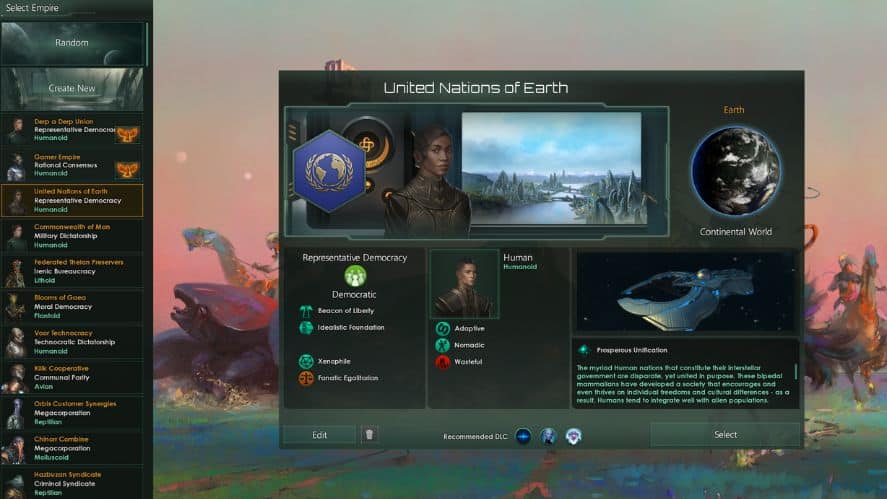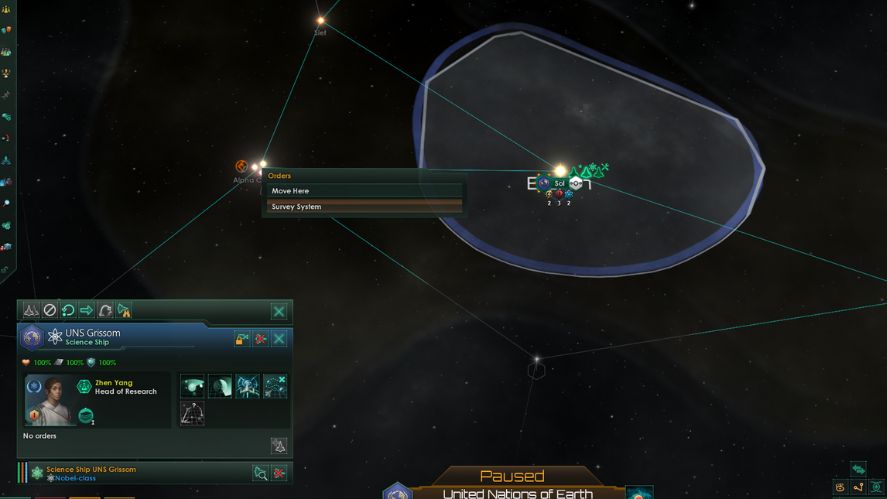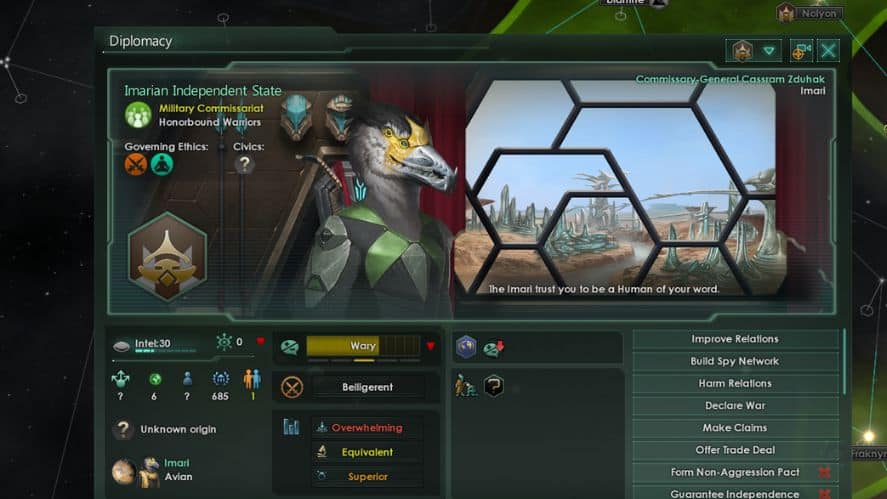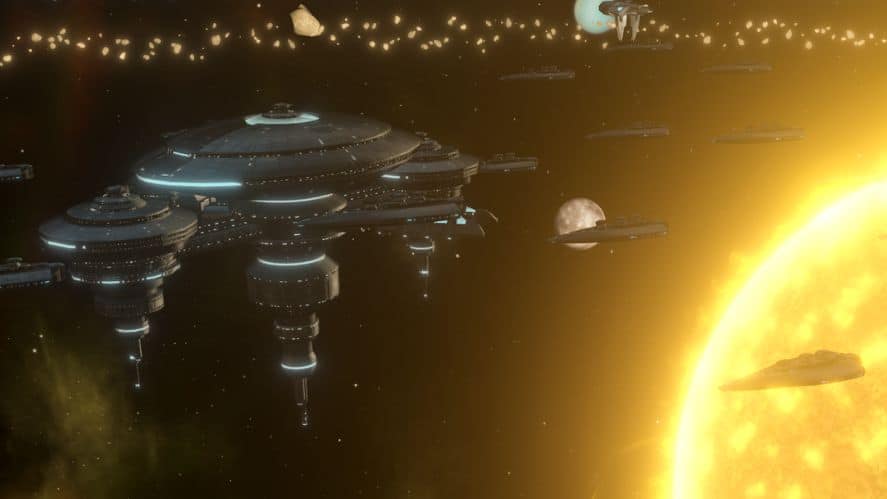Stellaris is a grand strategy, space, 4X, and empire management game. There are so many moving parts involved in this game that a lot of new players seek the help of online guides to get started.
The Stellaris forums are jam-packed with questions from new players and will be for the rest of the game’s life cycle. We do our best to answer many of these questions on Gamer Empire. One of the hardest questions new players have is, How do you play Stellaris?
Recommended Read: How to Uplift a Species in Stellaris
What is worse is that the in-game tutorial, while not as bad as it used to be, is not good enough. To be perfectly candid, this guide will not be good enough either. The only true way to get better at Stellaris is to keep playing the game and to keep failing.
There is no right or wrong way to play Stellaris. If you are having fun and your empire is still alive, you are playing the game properly. Due to the galaxy being procedurally generated, there is no one-size-fits-all strategy you can adopt.
This guide will instead give some solid foundation-building advice. It will cover advice on empire creation and selection, the basics of combat, what to do before you unpause the game, your first 20 years of gameplay, advice on reaching the mid-game, and general gameplay tips.
Table of Contents
- What Is Stellaris?
- Creating an Empire in Stellaris
- Before You Unpause the Game
- Your First 20 Years in Stellaris
- Reaching the Mid-Game: The First 100 Years
- Combat Basics
- Eight Quick Tips
What Is Stellaris?
Stellaris is a grand strategy game by Paradox Interactive. Players take on the role of spacefaring civilizations, and their aim is to ensure that their empire can endure the dangers the galaxy has in store for them.
There are over 20 different resources to manage; you have to design your ships, manage politics with other empires, keep your pops happy, colonize new worlds, fight murderous aliens, and research new technology, too.
The game begins with designing an empire to play as. You select what your empire believes in, their aspirations, what they look like, name their home planet, and determine their morality.
You take this empire from a curious space explorer stage all the way to a bona fide space empire. The gameplay loop is in a 4X fashion: explore, expand, exploit, and exterminate.
New players get thrown in at the deep end with Stellaris. Before you even begin, the empire creation system is enough to scare a lot of newbies off.
Creating an Empire in Stellaris
When you click on a new game for the first time, the game slaps you in the face right away. A large list of alien species appears, and the species information it shows you may as well be in a language you do not know.
At the very top, you will see an option to build your own empire. This is not easy either, as the game will teach you nothing about building your first empire.
You will be asking yourself, What the heck is a civic? Does it matter what climate my planet has? Is this trait any good? And what does all this rubbish mean?
Now is the time to teach you the most important and valuable thing in Stellaris. It is the power of reading.
Not very exciting, I know, but believe me, this is the true meta of the game. Almost every selectable asset in the game has a tooltip associated with it.
Whenever you hover over it with your mouse, a box will appear, and it will explain everything you need to know about that thing.
For instance, when selecting traits for your first species, hovering over any of the traits will explain exactly what they do and describe them in brief.
If you take anything away from this guide, please let it be this: reading the in-game tool tips is how you become better at Stellaris.
If this is your first game of Stellaris, I recommend playing as one of the pre-made empires. Specifically, the United Nations of Earth (UNE). They are humans and have a very beginner-friendly build.

The UNE also has some pre-scripted scenarios and locations for you to discover.
Keep all the game settings to default; the game difficulty is fair at these settings, but feel free to change any settings you wish.
If you have lost a few games of Stellaris in the past, do not hesitate to lower the difficulty. You can learn a lot more than you think from reaching later stages of the game at lower difficulties.
Before You Unpause the Game
When you begin playing, the game begins in a paused state. Before you hit that unpause button, there are a few things you need to do and should know about.
First, you should understand and know how to use the interface. The second is how to move around the galaxy. The third is to set up your research.
Fourth is how to begin exploring the neighboring systems. Last but not least, order your construction ship to start building.
At the top of the screen, you can see all the economic information about your empire. As you play, keep all of these resources positive.
If you ever notice you are running at a deficit, create the relative structures to bring it back. Use your secret reading powers to learn this information.
On the right is the outliner menu. Here, you can get a brief look at all of your planets, ships, space stations, and armies. It won’t display much now, but it will get cluttered fast.
On the left-hand side of the screen is the navigation bar. Hovering over it will expand it. This is how you access all the special menus in the game; it is one of the most important parts of the interface. Learn it well.

There are two ways to view the galaxy. The system viewer, which you begin the game in, and the galaxy map. You can access the galaxy map by clicking the icon at the bottom of the screen or pressing M.
The galaxy map is how you play the game 90% of the time. I hope you like looking at space, because you will be doing a lot of it.
Let’s start your first research project now. Unless you closed them, you will see three magnifying glasses at the top of the screen. Click these to open the technology menu or open it from the navigation bar.
Research comes in the form of three distinct disciplines; a full guide to the research system in the game is available here.
Set up a project for each discipline. Remember, the true superpower of Stellaris is reading, so read what each research option does.
I recommend selecting projects that increase research speed or ones that increase resource production in some way.
To explore the galaxy, you send out civilian-class science ships to scan planets. Select your science ship, and from the galaxy map, right-click on a neighboring star and select Survey System.
You can queue up a few systems by holding shift and selecting another star. Building more science ships allows you to explore systems faster.

The galaxy map is also the best way to order your construction ship to start building. Your home system will have room for mining and research stations. You should build these ASAP.
When your science ship finishes surveying a system, construction ships can go there and build outposts. This expands your empire’s borders.
Your First 20 Years in Stellaris
That was a lot, and you haven’t even started playing the game yet. Every Stellaris galaxy is unique; that is why I can’t tell you to go here, build this there, and so on.
Most beginnings will follow a similar pattern. I recommend keeping the game speed to normal while you learn what is going on and pause as often as you need to.
There is nothing else to do in the beginning except explore, so send out those science ships. The discovery tradition tree is a great first tradition choice. Your ships will explore faster, and your research speed will also increase.
Research as many anomalies as you can and find habitable planets close by. Use construction ships to expand your borders and build more space stations. Prioritize research stations over mining ones.
As soon as you can afford the colony ship, send one to colonize a planet that has around 80% habitability. There may be around 3 of these close by; don’t be afraid to spread out.
Be wary but open to any aliens you meet out in space. Send envoys to establish communications and find out your place in the pecking order.

Avoid war at this stage; if another empire starts one with you, build as many corvettes as you can and bait them into fighting within your borders.
A simple enjoyment of the process of exploring will help you a lot at this stage. Read what the game tells you and paint yourself a nice map in space. After a few hours of game time, things will begin to escalate very fast.
Reaching the Mid-Game: The First 100 Years
After about 20 years of gameplay, things will start to change quite a bit. The game pivots from being an exploration sim into space diplomacy management. With that comes a higher workload for the player.
The galactic community will form, which you should join. This is like the Republic from the Star Wars prequel trilogy. All the empires hold votes to determine galactic law.
As the scope of the game widens, so does the threat. If you haven’t already, you should consider building a stronger military at this point.
If you are weak, stronger empires will not think twice about wiping your empire from the galaxy.
Now is the time to dig in and secure your borders. Create strong defensive positions by using choke points in the hyper-lane network to your advantage.
Upgrade your ships, learn about the fleet manager, and use the ship designer feature.
If you last to the year 2300, you are in the top 10% of Stellaris players. Congratulations. Form alliances with your fellow empires if you can, because big threats are on the horizon once the mid-game begins.
Combat Basics
An inevitable part of playing Stellaris is space combat. The advice I am about to give you is quite controversial within the community, but it isn’t wrong either.
If you are playing the game on the standard difficulty, fleet management and ship design are not important until the end of the game.
Every fleet has a numerical power level; if you have a higher power level than your opponent, you will win 98% of your battles. This is controversial because it encourages “lazy gameplay.”

It is also not true for higher difficulty levels. If you are new to the game, using the predesigned ships and making sure you have higher numbers than your enemy is a very valid tactic.
Does that mean you should ignore these features? Absolutely not. Designing ships is one of the most fun parts of Stellaris.
Naming them and designing your ships, then watching them dominate, is an amazing feeling. But while you are learning, it is fine to wait to learn this feature.
Eight Quick Tips
Here are eight tips to help you get better at Stellaris as a beginner player:
- Use online resources. The Stellaris Wiki, guides on Gamer Empire, Reddit, and the Paradox forums. These are all invaluable resources to learn about the intricate details of Stellaris.
- Losing is part of the experience. To steal a line from the Dwarf Fortress community, “losing is fun.” You will lose in Stellaris; try to see these losses as learning opportunities. Dust yourself off, try a new tactic, or create a completely different kind of empire.
- Min-maxing is good but not vital. Optimized research or generator worlds are awesome. Do you need them to be an effective Stellaris player? Despite what a lot of people will say online, the answer is no.
- Don’t build what you don’t need. Everything you build in the game has an upkeep cost that you must pay. Building things you don’t need or can’t use means you pay that upkeep cost for nothing.
- Research is king. Research is so important in Stellaris that almost any problem in the game is solved by research in some way. If you can afford another research building, go ahead.
- Play as your empire. If you make an empire of religious pacifist mushrooms, make decisions that reflect that. If you are a racist militarist, act like one (only in the game, of course). This is role-playing; it is more fun to play the game this way, and your pops will be happier too.
- Watch your playtime. Stellaris is addictive, more so when things start going well. When your economic powerhouse of an empire is only going from strength to strength, it is easy to forget about the outside world. Set an alarm and make sure you get enough sleep; you will play better when you are well rested too.
- Please read. It bears mentioning again that the most powerful tool you have to become a better Stellaris player is reading what that game tells you. When you know what everything does, you know how to take advantage of it. Seriously, read more.
This was the beginner guide for Stellaris. Remember to enjoy your time with Stellaris, be open to failure, and be prepared to never know everything there is.
If you have any questions or suggestions for this guide, please let us know in the comments section below. Have fun becoming a better player in Stellaris.




